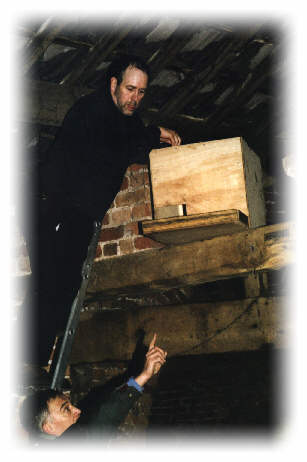|
Barn Owls don't build a nest in the normal sense of the word, they lay their eggs on a layer of pellets which have accumulated in their roosting site. Such sites are deep spacious cavities in trees (especially Elms), dark corners of barns, churches and other old buildings, or even gaps in straw stacks. Nest boxes provide a real opportunity for this declining species to re-establish its population. Owls may accept a nestbox readily using it just for roosting for as long as two years before finally breeding. There is evidence that around 40% of the barn owls in Cheshire now nest in nest boxes provided by man. The ideal site for a nest box in a building is a dark corner on a beam in an undisturbed building near farmland, away from busy roads. It is also possible to site boxes in modern, prefabricated farm buildings but in either case a permanent means of access to the building for the owls is vital. Nest boxes can also be placed in suitable trees or sometimes on a pole. We are currently placing nest boxes, if you have control of any open land or buildings and would like us make an assesment regarding suitability for nest boxes then please Contact us. We do not make a charge for these boxes, they are funded by voluntary donations, membership fees and sponsorships. |
